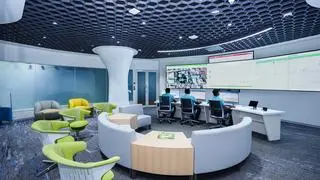With over 4500 stations across India, the Indian Railways is the most linked in transport network in the world. Over 30 million commuters flock to a station somewhere in the country every day, apart from people involved in transporting 2.8 million tons of freight daily. With such intense human presence, it is no surprise that waste is a challenge the Railways face.
The New Delhi Railway Station (NDRS) is a prime example of how the Northern Railways has shown openness to experimentation, and is able to show off the results.
Since 2012, the Railways has been working with Safai Sena, an association of waste pickers, itinerant buyers and small waste traders, and Chintan, a non-profit that helps organizations to reach Zero Waste goals, by using strategies of recycling, composting and simply reducing waste. Chintan’s goal is to minimize the waste that reaches landfills.
Wastepickers from Safai Sena are expected to pick out the trash from every train in the few minutes that it stands at the platform. They are also tasked to clean the platform bins, empty them before they overflow and ensure they are lined with a plastic bag at all times.
To minimize waste disposed from being dumped, Chintan proposed a Materials Recovery Facility (MRF) to handle both dry and wet waste. The collected waste is taken to this spot by a trained, uniformed team of wastepickers. The wet waste is composted using both an Organic Waste Composter as well as aerobic pit composting. The dry waste is segregated into over 12 categories and recycled. Low value materials, such as Tetrapak, tissue paper etc is also recycled. The PET bottles are chipped to ensure they are not reused, and passenger’s health safeguarded. The uneaten rotis, 10-12 kgs /day, are fed to cows.
Only waste which cannot be treated, such as chicken gravy or plastic bags containing filthy items are taken away to the landfill. The NDRS does not pay any amount to Safai Sena and Chintan. Compost, valued at Rs. 15 per kilo, free of cost, is given by Safai Sena to the Railways, for its own use, as it sees fit.
The NDRS has given the association a space for a MRF where waste is segregated and composted. Chintan has spent its own funds to build and equip it and pays for the electricity it uses. Data is diligently maintained and quarterly reports submitted. As a result, the Railways have been able to ensure that out of the four tons of total waste collected per day at the NDRS, over 3.25 tons of waste is recycled; 2.5 tons is dry waste and 0.75 tons is wet waste which is composted in situ.
Including wastepickers enabled the partnership to follow the law in this matter. Some wastepickers are now supervisors. Above all, the NDRS reminds us how well we can clean up India’s favorite transportation systems.
Edited excerpts from the book “State of Waste in India: Eighteen Years after the First National Rules” released last week. Published by Chintan Environmental Research and Action Group, New Delhi







Comments
Comments have to be in English, and in full sentences. They cannot be abusive or personal. Please abide by our community guidelines for posting your comments.
We have migrated to a new commenting platform. If you are already a registered user of TheHindu Businessline and logged in, you may continue to engage with our articles. If you do not have an account please register and login to post comments. Users can access their older comments by logging into their accounts on Vuukle.